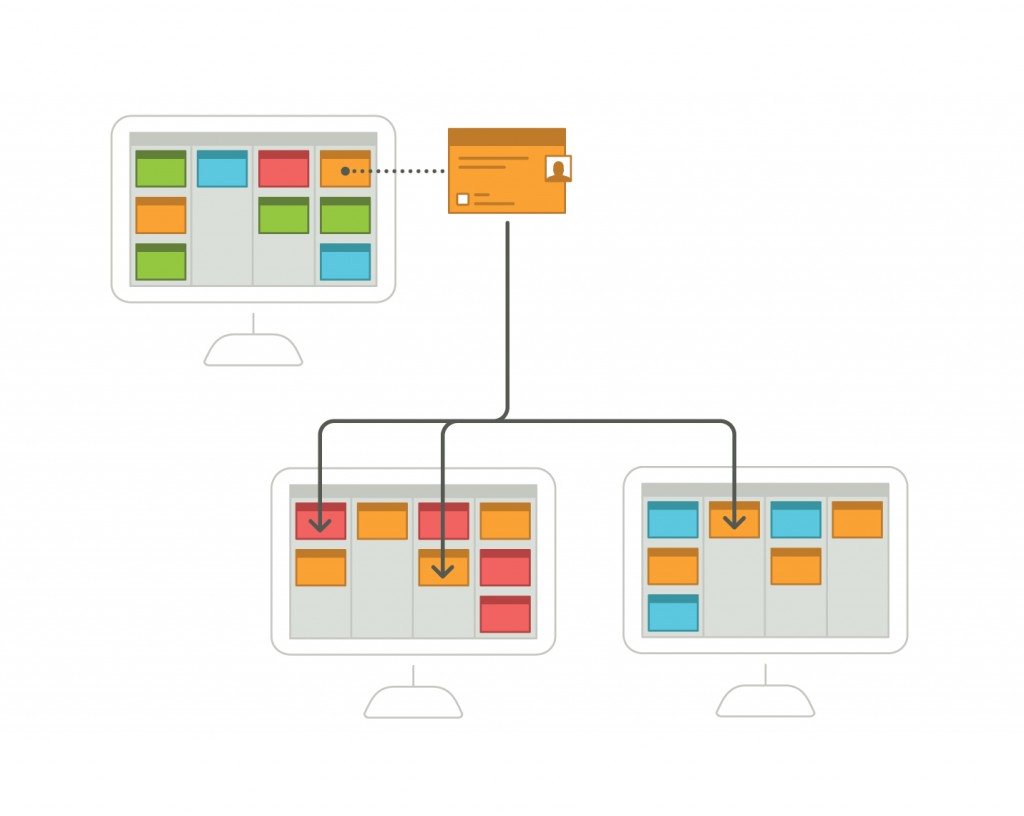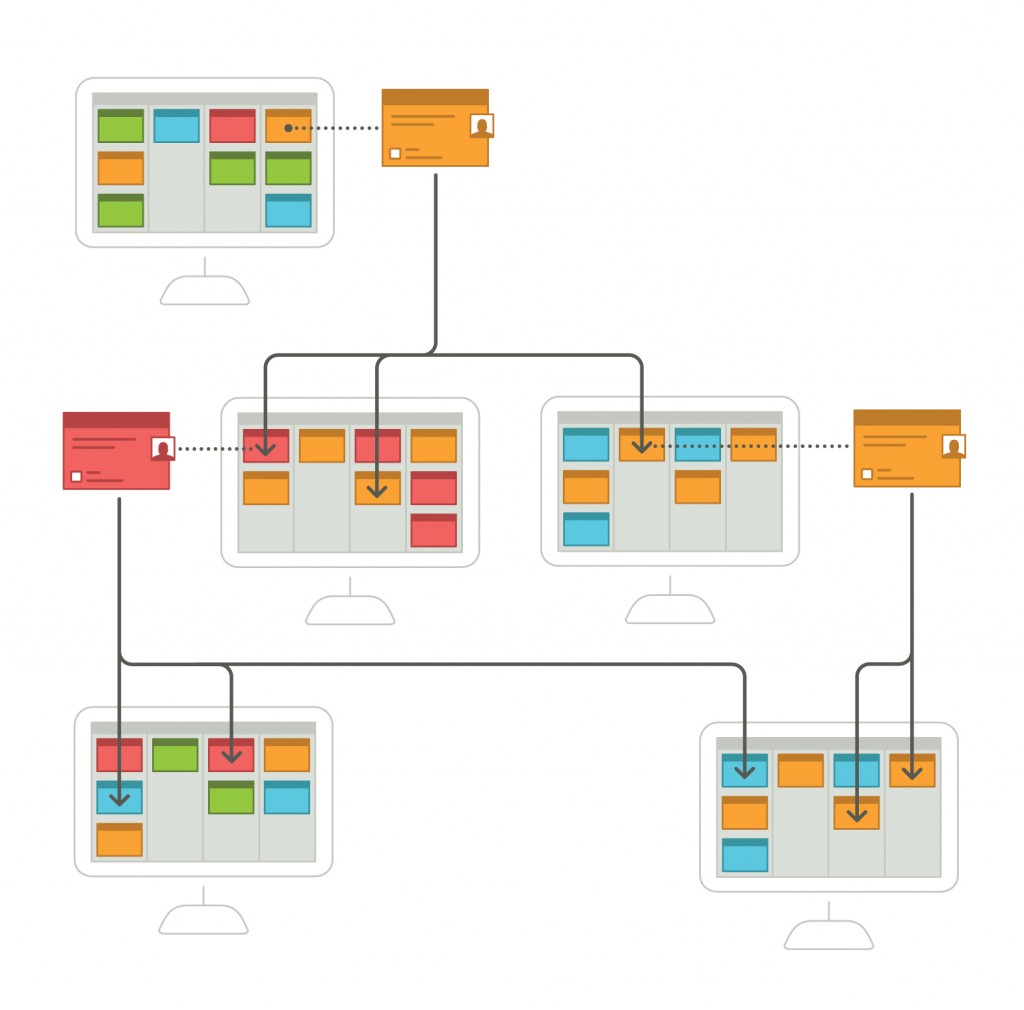
Keeping track of work initiatives that span multiple teams is challenging at the best of times. How do you ensure that each team has a clear understanding of what needs to be delivered and by when? What’s the process for managing handoffs and interdependent work between teams? How do you know when your timeline is at risk before you run out of time to course correct? All too often, we delay our own distributed work projects due to poor communication, misunderstandings and oversights.
Seeing how all related work items are connected makes it easier to track and manage distributed work. Quickly assessing the status of an initiative where work items are broken down across multiple teams — who are spread across different locations, time zones and languages — is critical to teams delivering value faster.
Now Available: Multi-Team Work Distribution Capabilities
Planview AgilePlace now supports your need to break down, distribute and track work across multiple teams, providing you with the roll-up visibility to monitor progress, surface issues and consistently deliver work on time and on budget.
Enabled by our Connections functionality, you can now establish a relationship from a work item on one board to work items that span multiple other boards.

The parent card provides the overall status of all the child cards, showing at a glance how much of the work has been completed and providing quick insight into progress blockers or scheduling issues.
Mirror Your Work Breakdown Structure in Planview AgilePlace
Multi-Team Work Distribution capabilities provide the flexibility needed for enterprises to mirror their existing complex workflows, which in many cases involves multiple teams working together to complete the work.
Here are two common scenarios:
- Tracking interdependent work items across multiple teams: Break down distributed work items spread across multiple teams and boards, keeping it connected so that everyone has a shared understanding of the work.
- Organizing work hierarchically: Create as many hierarchical layers as you need to cascade information from a top-level initiative down to work items at the team level, providing the right level of information to the right people.

Sample Use Case: Implementing a Hospital System
A hospital system provider has a key initiative to bring a new hospital online and creates a card on its strategic initiatives board to reflect this.
Because this is a critical initiative that involves many departments, the work is broken down into multiple projects distributed across multiple team boards. In this case, projects include prepping new infrastructure to support the new hospital, making sure data transfers are secure and enabling access to the system that staff members use to input/retrieve patient information, etc.
Each project involves multiple teams, so work is distributed across teams and their respective boards to ensure resources are being effectively utilized.
At the team level, members can see how their work fits into the bigger picture by viewing connections from each child card. At the strategic level, management can stay up-to-date on initiative progress via the rollup statistics on the parent card.
Key Benefits
- Keep everyone informed of progress without having to wait for the next status meeting. Roll-up and drill-down visibility ensure that managers, stakeholders and team members have access to the latest information to keep the work moving.
- When work spans multiple teams and levels of the organization, complexity becomes a challenge. Multi-Team Work Distribution allows you to visualize complex workflows across multiple or distributed teams, providing a shared view that everyone can align around.
- Flexibility to mirror your work breakdown structure. Multi-Team Work Distribution helps you scale Lean across your organization by supporting complex enterprise workflows.
![A Global Collaborative Work Management Blueprint [Video]](https://blog.planview.com/wp-content/uploads/2019/07/A-Global-Collaborative-Work-management-blueprint.png)



